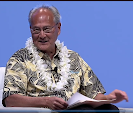You can see where this is going. Younger users text more than they talk, and though today's users 25 and above still talk more than they text, the usage pattern is uniform: younger age cohorts text more than older age cohorts.
So as each age cohort advances, one might predict that texting behavior will grow over time. How much it grows is the only real question.
Users 18 or younger actually"talk" about as much as users 55 to 64. One suspects an awful lot of "voice" activity is of the coordination and collaboration sort, so that younger and mid-life workers might be in work groups that require more coordination than workers 55 to 64.
Tuesday, August 24, 2010
Voice Usage and Texting Trends Headed in Opposite Directions
 Gary Kim was cited as a global "Power Mobile Influencer" by Forbes, ranked second in the world for coverage of the mobile business, and as a "top 10" telecom analyst. He is a member of Mensa, the international organization for people with IQs in the top two percent.
Gary Kim was cited as a global "Power Mobile Influencer" by Forbes, ranked second in the world for coverage of the mobile business, and as a "top 10" telecom analyst. He is a member of Mensa, the international organization for people with IQs in the top two percent.
Subscribe to:
Post Comments (Atom)
On the Use and Misuse of Principles, Theorems and Concepts
When financial commentators compile lists of "potential black swans," they misunderstand the concept. As explained by Taleb Nasim ...
-
We have all repeatedly seen comparisons of equity value of hyperscale app providers compared to the value of connectivity providers, which s...
-
It really is surprising how often a Pareto distribution--the “80/20 rule--appears in business life, or in life, generally. Basically, the...
-
One recurring issue with forecasts of multi-access edge computing is that it is easier to make predictions about cost than revenue and infra...

No comments:
Post a Comment